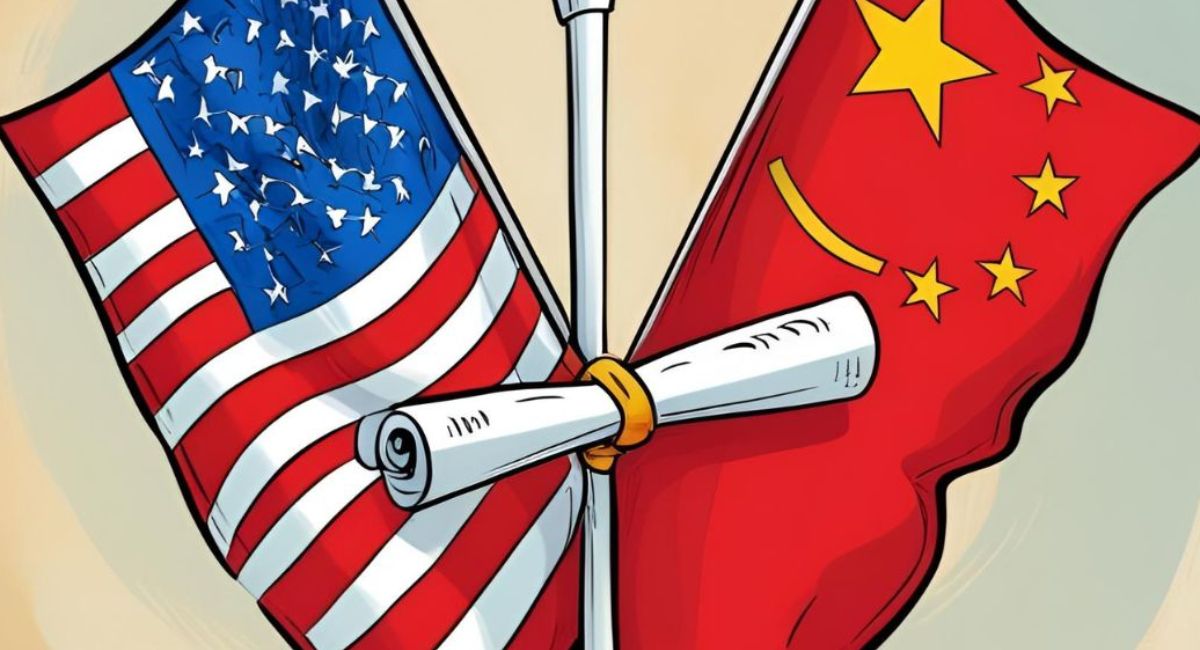I first came to America to pursue my undergraduate studies in August of 2014, a “golden era” of U.S.-China educational exchange. Four years later, I was working to help other Chinese students make their way through American higher education.
Today the Trump administration is attempting to slam the door on these exchanges, closing off a vital channel at a moment when they are most needed.
Without visiting America previously, I committed to spending at least two years completing my degree in Communication. I chose Purdue, home to more than 10,000 international students and ranked #7 among all U.S. universities for international student enrollment in 2014/2015.
The school provided exceptional support services that made my transition easy and campus life meaningful. I was greeted by a welcoming campus and later clear pathways to internships and jobs.
In 2018, after completing both my undergraduate and graduate studies, I joined George Mason University to build and support the flagship CHEPD China 1+2+1 program, established in 2001 to help Chinese students navigate visa hurdles. In 2019, the partnership program reached its peak enrollment, coinciding with the highest recorded number of Chinese students studying in the U.S., according to Statista.
Since then, those numbers have fallen steadily.
Long before Trump resumed office for his second term, the strengthening U.S. dollar steadily eroded Chinese families’ purchasing power, even as during the past decade U.S. college tuition and fees climbed at an average of 7% annually, according to Education Data Initiative.
Then came the COVID-19 pandemic. China’s strict travel bans and U.S. entry restrictions halted student arrivals completely. Even after the borders reopened, Chinese households continued to struggle with the impact of Beijing’s Covid lockdown policies. Stories began circling online of students abruptly losing financial support from their parents, many of whom began to question the return on investment (ROI) of an American degree for their children.
China’s tightening labor market, where a degree from an American university no longer guarantees a high paying job as it once did, has only fueled these doubts.
The result is that Chinese student enrollment numbers have yet to return to pre-pandemic levels – a 25.5% drop.
Most Americans seem unaware of the tremendous benefits that international education contributes to the U.S. economy. As an industry, it represents some $42 billion annually, employing 378,000 Americans. International students typically pay out-of-state tuition fees, providing essential revenue streams for universities.
As or maybe even more importantly, international students become a bridge connecting countries and cultures. They foster greater dialogue and understanding, opening doors that might otherwise remain closed.
In the case of U.S.-China relations, that could not be more important as the world’s two superpowers drift further apart even as tensions over trade, Taiwan and a host of other global challenges demand greater dialogue to avoid the worst outcomes.
Yet Trump and Republican officials seem determined to move in the opposite direction.
The president’s first hundred days in office have been marked by attacks on American institutions, including higher education. The White House says it has revoked the visas of more than 4,000 international students, making them immediately deportable. Republican lawmakers, meanwhile, have sought to target Chinese international students specifically, painting them as a threat to national security.
In March, the U.S. House Select Committee on China sent letters to six American universities seeking information on Chinese student enrollment in STEM programs specifically. Officials have also proposed legislation that would effectively halt student visas for Chinese nationals.
It is a remarkable about face when I consider my own trajectory here.
In 2014, I received a one-year student visa, and in 2015, I obtained a five-year visa without an interview, thanks to the new reciprocal multi-year visa arrangements. The situation for international students improved further in 2016 with the STEM OPT rule, extending the work authorization to thirty-six months for eligible graduates.
Today, given rising geopolitical tensions and economic uncertainty, Chinese students are exploring alternative destinations. A post-pandemic survey reports growing interest in programs in Hong Kong and the U.K, where shorter programs, perceived safety, and lower cost are seen as compelling advantages to study in the U.S.
Summer Wu with Italy’s Bocconi University tells Reuters she is fielding growing numbers of queries from students in China who tell her they “don’t know what will happen if they go to the U.S.”
For those of us who came to America a decade ago, the contrast is striking. As someone who has benefited and worked to facilitate student exchanges, I can only hope that cooler heads and collaborative spirits will eventually prevail in this vital aspect of U.S.-China relations.
Yajie Mu is a communication and program management professional with experience in higher education, stakeholder engagement, and multilingual outreach. She holds a Master’s degree in Communication Management from George Washington University and dual Bachelor’s degrees in Public Relations and Communication from Purdue University and China Agricultural University, respectively.





